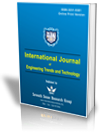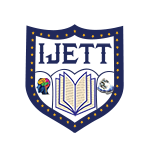LLM Agent Integrated with TENS Device for the Treatment of Neck Pain in Teleworking
LLM Agent Integrated with TENS Device for the Treatment of Neck Pain in Teleworking |
||
 |
 |
|
| © 2025 by IJETT Journal | ||
| Volume-73 Issue-11 |
||
| Year of Publication : 2025 | ||
| Author : Ricardo Yauri, Juan Balvin, Renzo Lobo | ||
| DOI : 10.14445/22315381/IJETT-V73I11P101 | ||
How to Cite?
Ricardo Yauri, Juan Balvin, Renzo Lobo,"LLM Agent Integrated with TENS Device for the Treatment of Neck Pain in Teleworking", International Journal of Engineering Trends and Technology, vol. 73, no. 11, pp.1-11, 2025. Crossref, https://doi.org/10.14445/22315381/IJETT-V73I11P101
Abstract
This research focuses on the need to monitor and treat cervical muscle pain in the context of teleworking, combining electrotherapy with artificial intelligence, with agents that use Large Language Models (LLMs) and Retrieval Augmented Generation (RAG), to offer contextual assistance and improve the effectiveness of physiotherapy therapies. In relation to the problem, during the COVID-19 pandemic, teleworking was promoted globally, which brought benefits of flexibility, generated ergonomic risks, an increase in musculoskeletal disorders, and work-related stress, affecting occupational health, making the need for LLM-RAG agents necessary to help with home therapies. The literature review revealed technological dependence on electrostimulation devices, the development of solutions adapted to different contexts, and the use of intelligent LLM-RAG agents in healthcare to provide therapeutic recommendations. Therefore, this research describes the design and implementation of an intelligent therapeutic system that integrates a TENS device controlled by an Android mobile application and assisted by an LLM-RAG agent to relieve neck pain in teleworkers through controlled signal generation and contextualized consultation connected to a vectorized document database. The results show the integration of electronic hardware, a mobile application, and an LLM-RAG agent to generate therapeutic signals, protect the hardware through current control, structure a vectorized document database with more than 170 fragments, answer queries with semantic accuracy between 94% and 98%, and average interaction time of less than 3.2 seconds.
Keywords
Nerve stimulation, TENS, LLM, RAG, Python, Cervical Muscle Pain.
References
[1] Egle Lendraitiene et al., “Changes and Associations Between Cervical Range of Motion, Pain, Temporomandibular Joint Range of Motion and Quality of Life in Individuals with Migraine Applying Physiotherapy: A Pilot Study,” Medicina, vol. 57, no. 6, pp. 1-10, 2021.
[CrossRef] [Google Scholar] [Publisher Link]
[2] Birgitte Ahlsen, Anne Marit Mengshoel, and Eivind Engebretsen, “Legitimacy In Clinical Practice: How Patients With Chronic Muscle Pain Position Themselves in the Physiotherapy Encounter,” Journal of Evaluation in Clinical Practice (JECP), vol. 29, no. 2, pp. 312-319, 2023.
[CrossRef] [Google Scholar] [Publisher Link]
[3] Ruilong Wang et al., “Risk Factors Associated with the Prevalence of Neck and Shoulder Pain Among High School Students: A Cross-Sectional Survey in China,” BMC Musculoskeletal Disorders, vol. 24, no. 1, pp. 1-8, 2023.
[CrossRef] [Google Scholar] [Publisher Link]
[4] Max Jakobsson et al., “Fear of Movement was Associated with Sedentary Behaviour 12 Months after Lumbar Fusion Surgery in Patients with Low Back Pain and Degenerative Disc Disorder,” BMC Musculoskeletal Disorders, vol. 24, no. 1, pp. 1-8, 2023.
[CrossRef] [Google Scholar] [Publisher Link]
[5] Inbar Levkovich et al., “Large Language Models Outperform General Practitioners in Identifying Complex Cases of Childhood Anxiety,” Digital Health, vol. 10, pp. 1-13, 2024.
[CrossRef] [Google Scholar] [Publisher Link]
[6] Niall Taylor et al., “Model Development for Bespoke Large Language Models for Digital Triage Assistance in Mental Health Care,” Artificial Intelligence in Medicine, vol. 157, pp. 1-19, 2024.
[CrossRef] [Google Scholar] [Publisher Link]
[7] Juan Sandoval-Reyes, Sandra Idrovo-Carlier, and Edison Jair Duque-Oliva, “Remote Work, Work Stress, and Work-Life During Pandemic Times: A Latin American Situation,” International Journal of Environmental Research and Public Health, vol. 18, no. 13, pp. 1-12, 2021.
[CrossRef] [Google Scholar] [Publisher Link]
[8] Mariluz Briceño et al., “Post-Traumatic Stress Associated with Telework-Related Job Limitation in Latin America,” International Journal of Environmental Research and Public Health, vol. 20, no. 13, pp. 1-11, 2023.
[CrossRef] [Google Scholar] [Publisher Link]
[9] Ludovico Bullini Orlandi et al., “Digital Workers’ Stress: The Role of Digital Creativity in the Future Jobs,” Journal of Innovation and Knowledge, vol. 9, no. 2, pp. 1-8, 2024.
[CrossRef] [Google Scholar] [Publisher Link]
[10] Felisa Latorre et al., “How Do Teleworkers and Organizations Manage the COVID-19 Crisis in Brazil? The Role of Flexibility I-Deals and Work Recovery in Maintaining Sustainable Well-Being at Work,” International Journal of Environmental Research and Public Health, vol. 18, no. 23, pp. 1-23, 2021.
[CrossRef] [Google Scholar] [Publisher Link]
[11] Túlio Fernandes De Almeida et al., “Development of an IoT Electrostimulator with Closed-Loop Control,” Sensors, vol. 22, no. 9, pp. 1-14, 2022.
[CrossRef] [Google Scholar] [Publisher Link]
[12] Ali Afsharian et al. “Work-Related Psychosocial and Physical Paths to Future Musculoskeletal Disorders (MSDs),” Safety Science, vol. 164, pp. 1-13, 2023.
[CrossRef] [Google Scholar] [Publisher Link]
[13] Shima Hashemi et al., “Relationship between Job Stress and Work-Related Quality of Life Among Emergency Medical Technicians: A Cross-Sectional Study,” BMJ Open, vol. 13, no. 6, pp. 1-7, 2023.
[CrossRef] [Google Scholar] [Publisher Link]
[14] Mohammad Hayatun Nabi et al., “Factors Associated with Musculoskeletal Disorders Among Female Readymade Garment Workers in Bangladesh: A Comparative Study between OSH-Compliant and Non-Compliant Factories,” Risk Management and Healthcare Policy, vol. 14, pp. 1119-1127, 2021.
[CrossRef] [Google Scholar] [Publisher Link]
[15] Rosalinda Tassara, et al., “High Frequency of Carpal Tunnel Syndrome and Associated Factors: A Cross-Sectional Study in Peruvian Workers from Agro-Export Industry,” Medicine, vol. 102, no. 44, pp. 1-7, 2023.
[CrossRef] [Google Scholar] [Publisher Link]
[16] Woo Jin Kim, and Byung Yong Jeong, “Exposure Time to Work-Related Hazards and Factors Affecting Musculoskeletal Pain in Nurses,” Applied Science, vol. 14, no. 6, pp. 1-13, 2024.
[CrossRef] [Google Scholar] [Publisher Link]
[17] Yu He Ke et al., “Retrieval Augmented Generation for 10 Large Language Models and its Generalizability in Assessing Medical Fitness,” npj Digital Medicine, vol. 8, no. 1, pp. 1-11, 2025.
[CrossRef] [Google Scholar] [Publisher Link]
[18] JiaSheng Yao, YanLiang Guo, and Qing Yu, “Adapting Large Language Models for Healthcare with an Enhanced Retrieval-Augmented Generation Framework,” 2025 8th International Conference on Advanced Algorithms and Control Engineering (ICAACE), Shanghai, China, pp. 2601-2606, 2025.
[CrossRef] [Google Scholar] [Publisher Link]
[19] ChihYing Liao et al., “Enhancing Patient Outcomes in Head and Neck Cancer Radiotherapy: Integration of Electronic Patient-Reported Outcomes and Artificial Intelligence-Driven Oncology Care Using Large Language Models,” Cancers, vol. 17, no. 14, pp. 1-14, 2025.
[CrossRef] [Google Scholar] [Publisher Link]
[20] Yongle Kon et al., “Document Embeddings Enhance Biomedical Retrieval-Augmented Generation,” 2024 IEEE International Conference on Bioinformatics and Biomedicine (BIBM), Lisbon, Portugal, pp. 962-967, 2024.
[CrossRef] [Google Scholar] [Publisher Link]
[21] Amin Shahdad et al., “Effect of Transcutaneous Electrical Nerve Stimulation of Acupoints on Respiratory Outcomes of COVID-19 Patients with Moderate Pulmonary Involvement: A Parallel Randomized Clinical Trial,” Health Science Reports, vol. 6, no. 7, pp. 1-11, 2023.
[CrossRef] [Google Scholar] [Publisher Link]
[22] Mona Ramezani, Fatemeh Ehsani, and Ali Gohari, “Effect of Functional Electrical Stimulation on Muscle Mass, Fatigue, and Quality of Life in Older Patients with COVID-19: A Randomized Clinical Trial Study,” Journal of Manipulative and Physiological Therapeutics, vol. 46, no. 2, pp. 65-75, 2023.
[CrossRef] [Google Scholar] [Publisher Link]
[23] Anran Wang et al., “Characteristics of Artificial Intelligence Clinical Trials in the Field of Healthcare: A Cross-Sectional Study on ClinicalTrials.gov,” International Journal of Environmental Research and Public Health, vol. 19, no. 20, pp. 1-20, 2022.
[CrossRef] [Google Scholar] [Publisher Link]
[24] J. Kohli et al., “Algorithmic Assessment of Cellular Senescence in Experimental and Clinical Specimens,” Nature Protocols, vol. 16, no. 5, pp. 2471-2498, 2021.
[CrossRef] [Google Scholar] [Publisher Link]
[25] Chao Zhang et al., “Nomogram for Early Prediction of Outcome in Coma Patients with Severe Traumatic Brain Injury Receiving Right Median Nerve Electrical Stimulation Treatment,” Journal of Clinical Medicine, vol. 11, no. 24, pp. 1-14, 2022.
[CrossRef] [Google Scholar] [Publisher Link]
[26] Sidhant Kalsotra, Julie Rice-Weimer, and Joseph D. Tobias, “Intraoperative Electromyographic Monitoring in Children Using a Novel Pediatric Sensor,” Saudi Journal of Anesthesia, vol. 17, no. 3, pp. 378-382, 2023.
[CrossRef] [Google Scholar] [Publisher Link]
[27] Juan Herber Grados Gamarra et al., “Design of an Affordable Muscle Electrostimulator for Rural Populations,” Proceedings of the 18th LACCEI International Multi-Conference for Engineering, Education and Technology, Virtual, 2020.
[CrossRef] [Google Scholar] [Publisher Link]
[28] Juan Grados et al., “Low-cost Electrostimulator based on Kotz Waves for the Intensification of Abdominal Muscle Activity,” ICECC '23: Proceedings of the 2023 6th International Conference on Electronics, Communications and Control Engineering, Fukuoka, Japan, pp. 93-98, 2023.
[CrossRef] [Google Scholar] [Publisher Link]
[29] Aleš Procházka et al., “Mobile Accelerometer Applications in Core Muscle Rehabilitation and Pre-Operative Assessment,” Sensors, vol. 24, no. 22, pp. 1-16, 2024.
[CrossRef] [Google Scholar] [Publisher Link]
[30] Shahzad Hussain et al., “Smart Physiotherapy: Advancing Arm-Based Exercise Classification with PoseNet and Ensemble Models,” Sensors, vol. 24, no. 19, pp. 1-16, 2024.
[CrossRef] [Google Scholar] [Publisher Link]
[31] Gisele Sampaio Silva, and Eva Rocha, “Developing Systems of Care for Stroke in Resource-limited Settings,” Seminars in Neurology, vol. 44, no. 2, pp. 119-129, 2024.
[CrossRef] [Google Scholar] [Publisher Link]
[32] Yusef Yassin et al., “Evaluating a Generative Artificial Intelligence's Accuracy in Providing Medication Instructions from Smartphone Images,” Journal of the American Pharmacists Association, vol. 65, no. 1, pp. 1-5, 2025.
[CrossRef] [Google Scholar] [Publisher Link]
[33] Guido Giunti, and Colin P. Doherty, “Cocreating an Automated mHealth Apps Systematic Review Process With Generative AI: Design Science Research Approach,” JMIR Medical Education, vol. 10, pp. 1-10, 2024.
[CrossRef] [Google Scholar] [Publisher Link]

